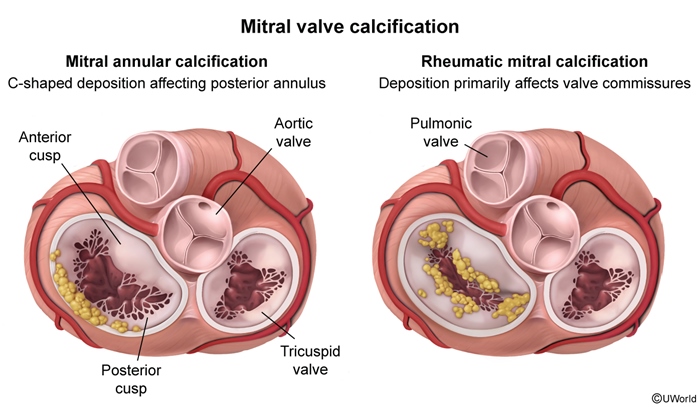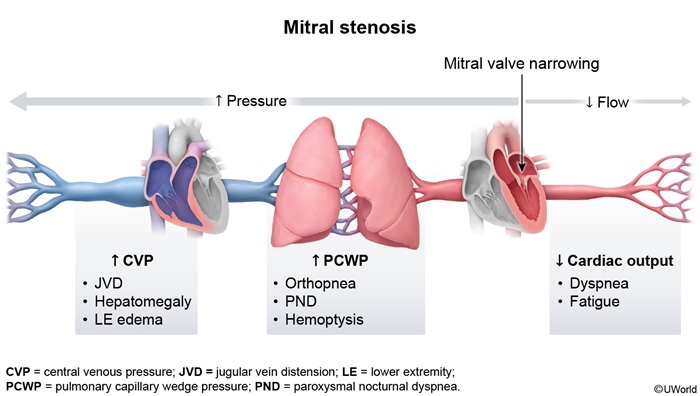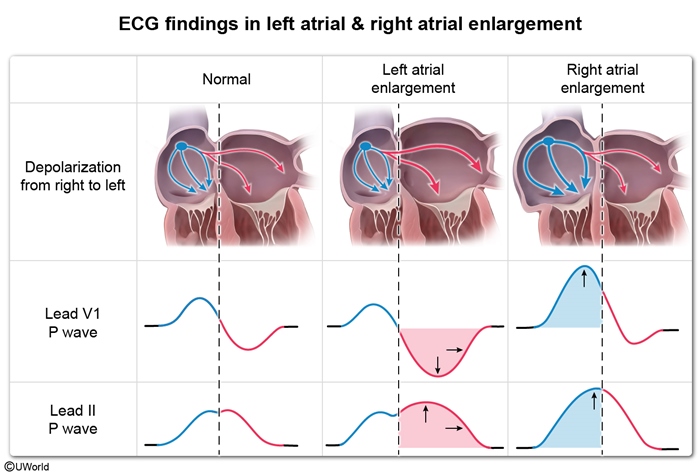Valve Disorders: Mitral Stenosis
Article Sections
Introduction
Mitral stenosis results from valve calcification and stiffening that impede valve opening and diastolic blood flow from the left atrium to the left ventricle. Most cases are due to rheumatic heart disease (RHD). Severe mitral stenosis leads to heart failure and also greatly increases the risk of cardiac thromboembolic disease.
Pathophysiology
The pathophysiology of mitral stenosis usually involves chronic inflammation and scarring of the mitral valve leaflets, resulting from repeated episodes of rheumatic fever. This leads to thickening, calcification, and fusion of the valve leaflets, reducing their mobility and restricting the opening of the mitral valve orifice. Consequently, blood flow from the left atrium to the left ventricle is impeded, restricting cardiac output and causing increased pressure in the left atrium and pulmonary circulation.
Continue Learning with UWorld
Get the full Valve Disorders: Mitral Stenosis article plus rich visuals, real-world cases, and in-depth insights from medical experts, all available through the UWorld Medical Library.
Figures


